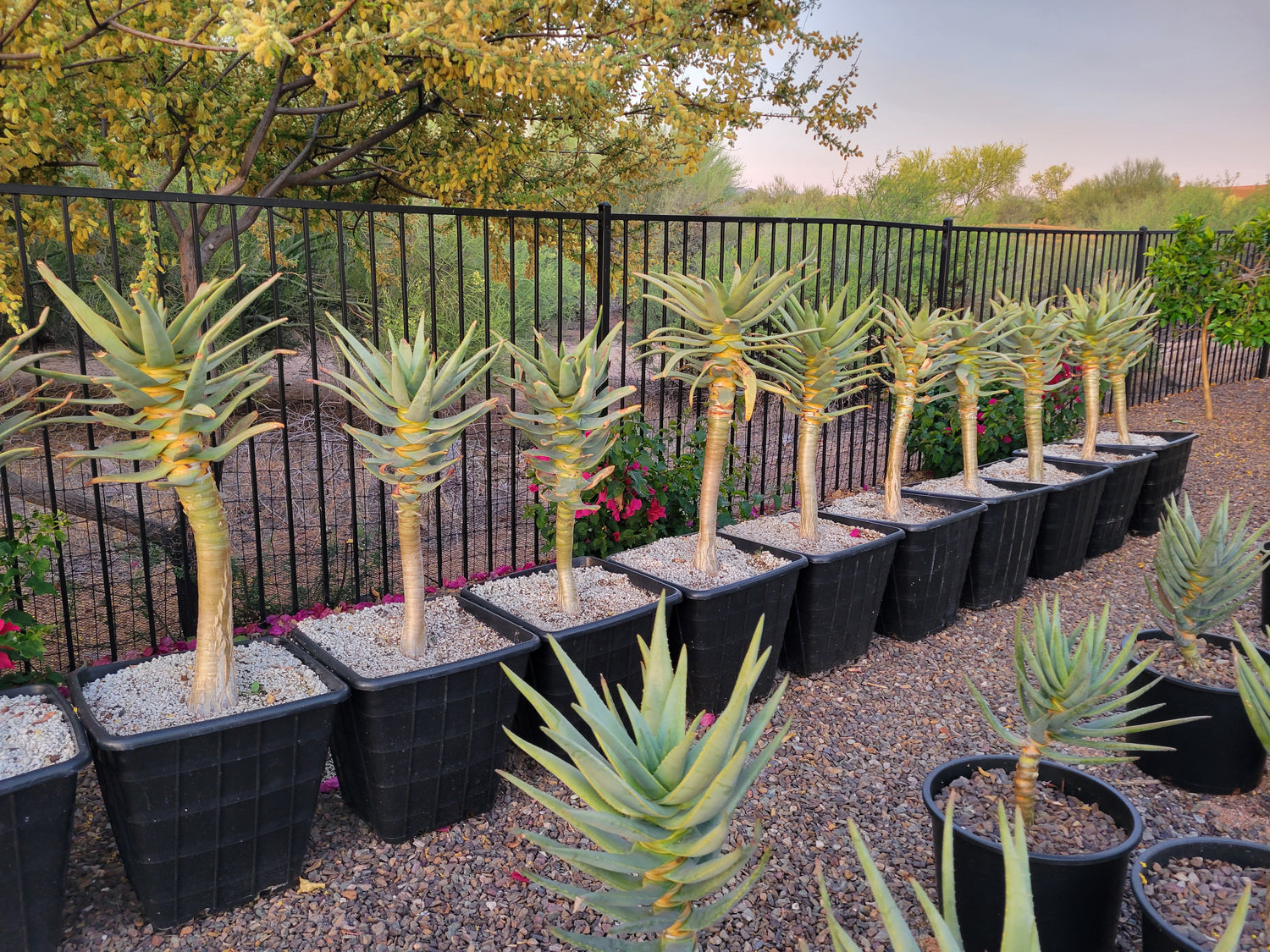We Sell Quiver Trees - Aloe Dichotoma



What We Do
We sell quiver trees here in Scottsdale, Arizona. Please call or text (480) 788-9041

Quiver Tree (3 Feet)
7 Gallon Containers
Price: $300
Over 40 in Stock
Local Delivery Available
Buy Online - Nationwide Delivery Available

Quiver Tree (4 Feet)
16" Boxes
Price: $800
Over 17 in Stock
Local Delivery Available

Quiver Tree (6 Feet)
15 Gallon Containers
Price: $1500
Over 2 in Stock
Local Delivery Available
Contact
Quiver Trees
Aloe dichotoma, commonly known as the Quiver Tree or Kokerboom, is a tall, branching species of aloe indigenous to the Northern Cape region of South Africa and parts of Namibia. It's recognized for its distinctive tall stem and smooth bark, which peels away in thin sheets, revealing a pale yellow-green underlayer. The leaves are long, sharp, and succulent, forming rosettes at the tips of branches.
The Quiver Tree gets its name from the San people's historical practice of hollowing out the tree's branches to use them as quivers for their arrows.
This tree is well-suited for arid environments and is adapted to handle harsh sunlight and drought conditions. Over the years, it has become a symbol of the Namib Desert. This extremely hardy tree can grow to the age of over 150 years and a height of up to 32 feet. Bright yellow flowers bloom during winter when the tree reaches 20 to 30 years old.
How to Care
Flowering
The bright yellow quiver tree flowers emerge in mid-winter. While short and rounded, they are showy and attractive.
Watering
Established trees planted in the ground should be watered once a month, while those in pots need to be watered once a week or every other week.
Soil
A sand and gravel mix is best. Avoid using cactus mix, garden soil, or potting soil.
Light
Direct or Indirect sunlight is preferred.
Growth Rate
The quiver tree has a steady growth rate of 4-8 inches per year.
Hardiness
Quiver trees (Aloidendron dichotomum) are generally hardy toUSDA hardiness zones 9a-11b. They are cold-hardy to temperatures around 20-25°F, but ideally, they should be protected from frost, especially prolonged or severe frost.
